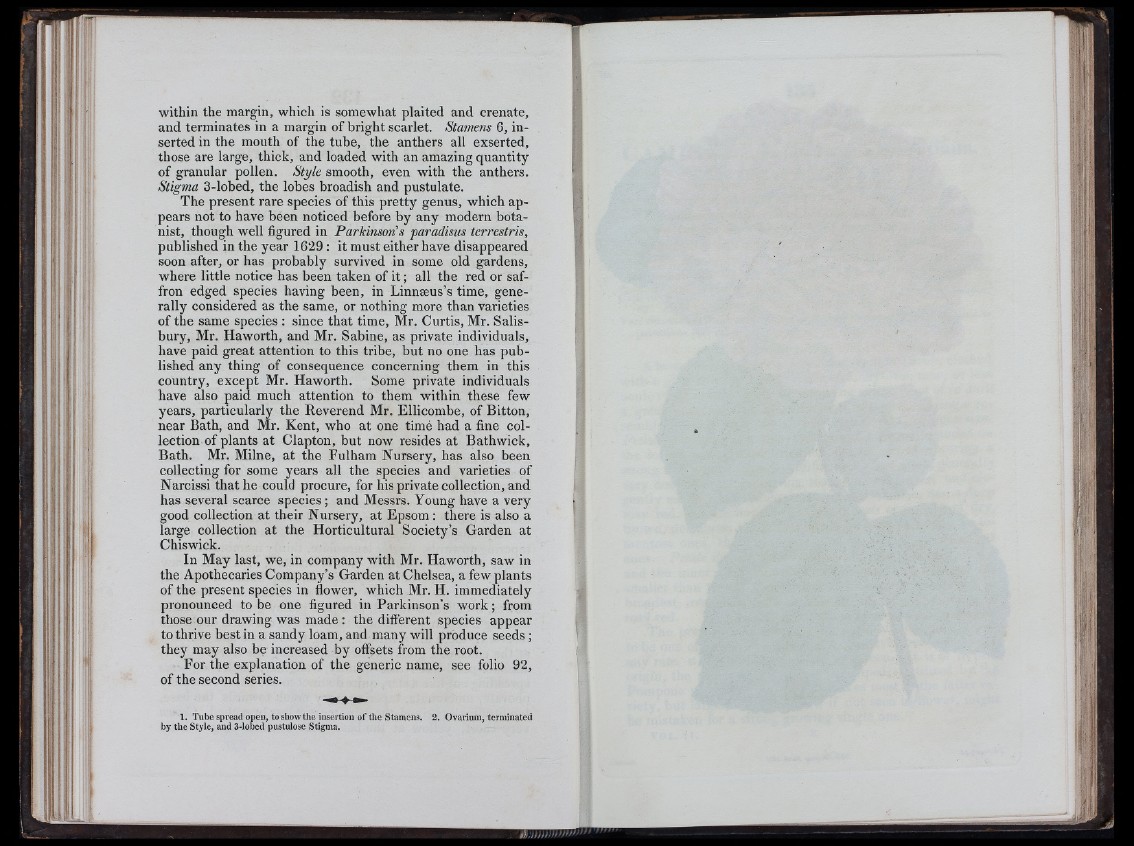
within the margin, which is somewhat plaited and crenate,
and terminates in a margin of bright scarlet. Stamens 6, inserted
in the mouth of the tube, the anthers all exserted,
those are large, thick, and loaded with an amazing quantity
of granular pollen. Style smooth, even with the anthers.
Stigma 3-lobed, the lobes broadish and pustulate.
The present rare species of this pretty genus, which appears
not to have been noticed before by any modern botanist,
though well figured in Parkinsons paradisus terrestris,
published in the year 1629 : it must either have disappeared
soon after, or has probably survived in some old gardens,
where little notice has been taken of i t ; all the red or saffron
edged species having been, in Linnaeus’s time, generally
considered as the same, or nothing more than varieties
of the same species ; since that time, Mr. Curtis, Mr. Salisbury,
Mr. Haworth, and Mr. Sabine, as private individuals,
have paid great attention to this tribe, but no one has published
any thing of consequence concerning them in this
country, except Mr. Haworth. Some private individuals
have also paid much attention to them within these few
years, particularly the Reverend Mr. Ellicombe, of Bitton,
near Bath, and Mr. Kent, who at one timé had a fine collection
of plants at Clapton, but now resides at Bathwick,
Bath. Mr. Milne, at the Fulham Nursery, has also been
collecting for some years all the species and varieties of
Narcissi that he could procure, for his private collection, and
has several scarce species; and Messrs. Young have a very
good collection at their Nursery, at Epsom ; there is also a
large collection at the Horticultural Society’s Garden at
Chiswick.
In May last, we, in company with Mr. Haworth, saw in
the Apothecaries Company’s Garden at Chelsea, a few plants
of the present species in flower, which Mr. H. immediately
pronounced to be one figured in Parkinson’s work; from
those our drawing was made : the different species appear
to thrive best in a sandy loam, and many will produce seeds;
they may also be increased by offsets from the root.
For the explanation of the generic name, see folio 92,
of the second series.
u:?r:
1. Tube spread open, to show the insertion o f the Stamens. 2 . Ovarium, terminated
by the S ty ie , and 3-iobed pustuiose Stigma.